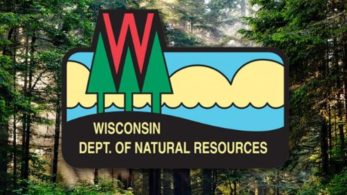V
Harnessing thousands of eyes to track down new invasive species
Contact(s): Jason Granberg, DNR invasive plant specialist, (608) 267-7758
New technology brings together reports from all over Wisconsin, makes it easy to use
MADISON – Citizens reporting wild chervil and other invasive species they see along roadsides, bike paths, public lands and waters are part of a comprehensive database helping quickly detect new invasive species, so resources can be directed to controlling them quickly.

Wisconsinites can use this interactive map to see which invasive species are being reported where.Photo credit: University of Wisconsin-Madison, Division of Extension
The Invasive Species Archive combines monitoring data from the Department of Natural Resources, federal agencies, university researchers, and citizen scientists It uses new technology to make it easy for property managers, local Cooperative Invasive Species Management Areas, and others who work with invasive species.
“This tool will enable our partners to take the data and immediately use it to create monitoring and control plans for invasive species,” says Jason Granberg, the Department of Natural Resources invasive species specialist who built the tool.
DNR has early detection and response funds that can help local conservationists address a new infestation while the population is still small enough to control, Granberg says. Once an invasive species gets established, the costs to manage and control it can become very expensive.
DNR has provided all DNR state natural area, parks, forest, and wildlife area managers and local Cooperative Invasive Species Management Areas with lists of all species reported within and near their borders. DNR also has shared the archive with the Wisconsin Department of Transportation to use in their plan to control prohibited invasive species found along road right of ways.
“It’s great to have this resource at our disposal,” says Bob Wakeman, who coordinates DNR aquatic invasive species efforts. “Our partners and property managers now have some help in identifying what invasive species may be on their property and developing a control strategy that helps them to prioritize where they should spend limited resources for control.”
The Lower Chippewa Invasives Partnership, for example used the archive information from DNR to quickly apply for DNR rapid response funds to control amur cork trees and wild chervil. The money is helping the partnership train officials, roadside managers and landowners to address infestations of the two species, and to pay for supplies for local control of them.
Invasive species are non-native plants, animals, or pathogens that take over a new location and alter the ecosystem, affecting its function, economic value and/or human health. Typically, these invasive species can take over an area because they do not have the predators, competitors, or diseases from their home ranges which keep them in check.
Call for the public to report prohibited species to DNR
To keep the database current and robust, Granberg is inviting Wisconsin residents and visitors to report if they find species that are prohibited in Wisconsin and if they find a plant or animal they’ve never seen before. See some of the prohibited terrestrial invasive species DNR is looking for in this slide show.
“Early detection is crucial for the early control of these species,” Granberg says. The public can contact the DNR by sending an email to Invasive.Species@Wisconsin.Gov along with a photograph, location, and size descriptions for any invasive species.
To understand which invasive species are prohibited in Wisconsin and which have been reported in an area, people can use the Wisconsin Shared Terrestrial Invasive Plant Presence online visualization tool developed by University of Wisconsin-Madison’s Division of Extension. This interactive map provides information on species locations, legal classification, and area of interest.
